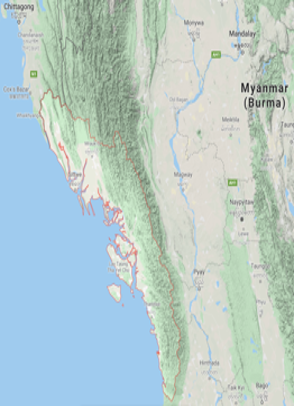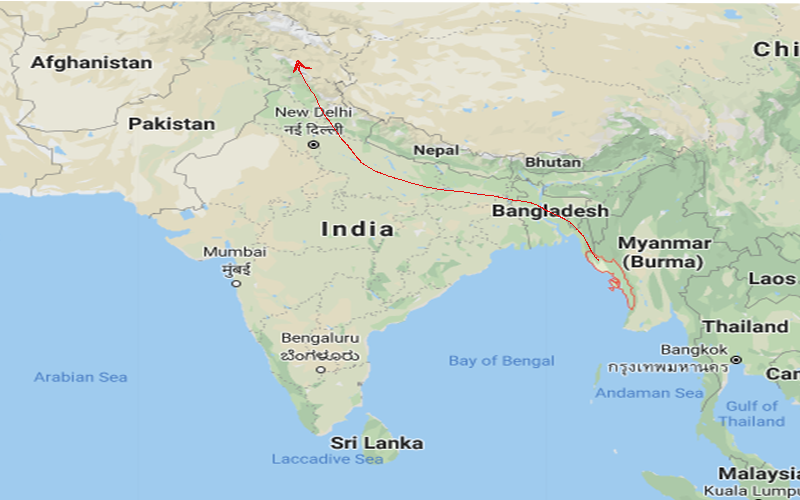The partition of India by colonial Britain in 1947 on the basis of Islamic majority regions resulting in the formation of the Islamic Republic of Pakistan and the People’s Republic of Bangladesh (with Islam as its official religion) has left a deep and lasting scar on Indian Civilization. Unfortunately for the non-Islamic minorities in these countries the trauma continues, even to this day. Life with dignity is impossible and naturally these oppressed people look to India for succour. Despite the formation of a sovereign Islamic nation, illegal immigration from Bangladesh continues unabated. While the Muslims find succour and support from their co-religionists in India and corrupt politicians in Bengal, Assam and other states, the non-Islamic minorities fleeing structural oppression continue to face insurmountable hurdles and the apathy of the State. Not being of much use to the corrupt politicians who have used the façade of secularism to nurture, appease and exploit the Muslim vote bank in India to win elections, their fate is consigned to refugee colonies without any prospect of citizenship and integration into the mainstream life of India. The Muslim illegals on the other hand have been always shielded from scrutiny of the law and have official identity documents facilitated for them at speed. While this is common knowledge, the opposition political parties and much of mainstream English media, has been vociferous in denial. Thus when the current BJP government brought in the Citizenship Amendment Act to regularise and grant citizenship to the oppressed minorities of the Islamic countries of Afghanistan, Bangladesh and Pakistan, who had fled to India until 2014, all hell broke loose.
The Nexus
With the CAA on one hand and the prospect of National Citizenship Register (NRC) on the other, to detect illegal immigrants in India, it was literally a violent shove to the power base of the India’s pseudo-secular political tribes, disrupting their ability to further illegal patronage. Spectacular incidents of violence aimed at Central Government properties such as the Railways, was unleashed by hordes of delinquent Muslim youth, primarily in West Bengal which hosts the largest population of illegal Bangladeshis. It was clear that these baying mobs, had little regard for national property and their intent was purely intimidatory to demonstrate the kind of violence they are capable of unleashing. While one can try to understand the point of view of opposition politicians and even the illegals it was quite eye opening to see the Anglo Saxon international media comprising of some reputable names jump at this opportunity to profess doom for the democratic institutions of India and start peddling downright lies about the nature of the CAA which now happens to be duly notified Law. Comparisons between the CAA and the Citizenship Law of Myanmar have been drawn and linkages between the plight of the Rohingyas with Indian Muslims have been implied. This in turn has been picked up by left leaning student unions in some Indian University campuses, and a litany of lies concocted to instigate and bait violence. It is absolutely essential to puncture these lies and unwarranted comparison and therefore very important for the Indian citizenry to understand the Rohingya issue, its parallels, and what the present government needs to be careful about to avert and nullify the malicious intentions against our country.
Crisis in our doorstep
The Rohingya refugee crisis is the largest refugee crisis in the world today, after the exodus of over a million Syrians into Europe in 2016. Just as the Western Press, holds Bashar Al Assad responsible for this rather than the Daesh (ISIS) and the host of other Western and Turkish funded militant groups who started the conflict, the Rohingya Refugee crisis is squarely blamed on the Myanmar government and its military. The Rohingya crisis or conflict centres in the Rakhine state, earlier called Arakan in the West. Rakhine is a coastal geographic region in Lower Myanmar. It comprises a long narrow strip of land along the eastern seaboard of the Bay of Bengal and stretches from the Naf river estuary near Chittagong Hills area (in Bangladesh) in the north to the Gwa River in the south. The Arakan Yoma, a mountain range forms the eastern boundary of the region, and isolates Rakhine from the rest of Myanmar.

Contour map of Rakhine State
Rakhine State
Rakhine and the neighbouring region
The land is fertile and after conquest by the British East India Company in 1826, Rakhine became a leading rice exporter mainly cultivated by settlers who were encouraged to come in from the Chittagong area of the Bengal Presidency under a policy of mass immigration between 1826-1948 at the behest of colonial masters. This to a large extent is the genesis of the conflict in Rakhine. These settlers from the erstwhile Bengal Province of British India were mainly Muslims whereas the original inhabitants of the region were Buddhists. The Myanmar government thus considers these settlers to be Chittagonian Bengalis.
Aye Chan, in his paper The Development of a Muslim Enclave in Arakan (Rakhine) State of Burma (Myanmar), published in SOAS (a UK University) concludes the following about the Rohingyas:
For successive generations their ethnicity and Islam have been practically not distinguishable. At the beginning they adopted the policy of irredentism in favour of joining East Pakistan with the slogan, “Pakistan Jindabad,” (Victory to Pakistan). This policy faded away when they could not gain support from the government of Pakistan. Later they began to call for the establishment of an autonomous region instead. During the Independence War in Bangladesh most of the Muslims in Arakan supported West Pakistan. After Bangladesh gained independence Dhaka followed the policy of disowning those Chittagonians. Consequently they had to insist firmly on their identity as Rohingyas. Their leaders began to complain that the term “Chittagonian Bengali” had arbitrarily been applied to them. But the majority of the ethnic group, being illiterate agriculturalists in the rural areas, still prefer their identity as Bengali Muslims.
Katie Hunt of CNN has compiled a short photo- essay titled “Rohingya Crisis: How we got here” to describe the chronology of key events.
- 1430 AD: Last Rakhine kingdom founded, with its capital in Mrauk U. Situated on the border between Buddhist and Muslim Asia, the city became one of Asia’s richest. In 1785 it came under Myanmar’s control.
- 1826- 1948: The Muslim community in Rakhine expanded rapidly during colonial times, doubling from the 1880s to 1930s. Expanding rice cultivation required significant labour, largely filled by Muslim workers from neighbouring Bengal.
- 1941- 1945, World War II: Rakhine State was on the front line between the Japanese troops and allied forces. Muslims were mostly pro-British, while Rakhine Buddhists initially supported the Japanese.
- 1948: Shortly after Myanmar’s independence from British rule, a Muslim rebellion erupted in Rakhine, demanding equal rights and an autonomous area. The rebellion was eventually defeated.
- 1962: Military rule begins. Rights that Rohingya had enjoyed before the coup were eroded. In 1978 and 1991, heavy-handed government campaigns pushed more than 200,000 Muslims across the border into Bangladesh.
- 1982: New citizenship law passed identifying 135 national ethnic groups. The Rohingya aren’t one of them, effectively rendering them stateless.
- 2014: Myanmar conducts first census in more than three decades but Rohingya are excluded.
- November 2015: In the first democratic elections since end of military rule, Rohingya aren’t allowed to participate as candidates, nor as voters. Suu Kyi’s party wins and she becomes de-facto leader in a power-sharing agreement with the military.
- October 2016: The attacks spark an intense crackdown by the Myanmar military and trigger an exodus of Rohingya to Bangladesh. Rohingya insurgent group, now known as Arakan Rohingya Salvation Army (ARSA), claims responsibility for the border post attack.
- August 2017: Myanmar’s state media reports ARSA insurgents targeting at least 20 police outposts and an army base in Rakhine State. Military responds with what they describe as “clearance operations,” burning down villages and triggering a mass exodus of Rohingya to Bangladesh.
